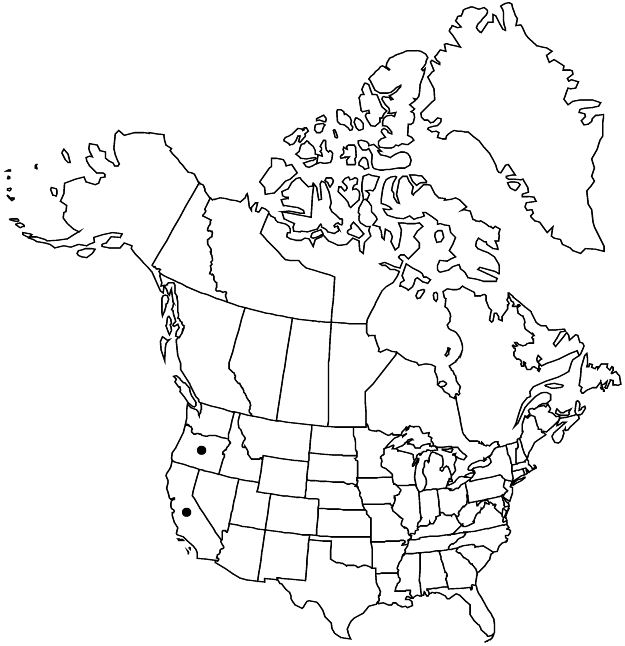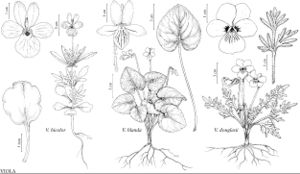Difference between revisions of "Viola douglasii"
Nomencl. Bot. ed. 2, 2. 771. 1841.
FNA>Volume Importer |
imported>Volume Importer |
||
| (3 intermediate revisions by 2 users not shown) | |||
| Line 10: | Line 10: | ||
|special_status={{Treatment/ID/Special_status | |special_status={{Treatment/ID/Special_status | ||
|code=F | |code=F | ||
| − | |label= | + | |label=Illustrated |
}} | }} | ||
|basionyms={{Treatment/ID/Basionym | |basionyms={{Treatment/ID/Basionym | ||
|name=Viola chrysantha | |name=Viola chrysantha | ||
|authority=Hooker | |authority=Hooker | ||
| + | |rank=species | ||
|publication_title=Icon. Pl. | |publication_title=Icon. Pl. | ||
|publication_place=1: plate 49. 1836, | |publication_place=1: plate 49. 1836, | ||
| Line 42: | Line 43: | ||
-->{{#Taxon: | -->{{#Taxon: | ||
name=Viola douglasii | name=Viola douglasii | ||
| − | |||
|authority=Steudel | |authority=Steudel | ||
|rank=species | |rank=species | ||
| Line 56: | Line 56: | ||
|publication title=Nomencl. Bot. ed. | |publication title=Nomencl. Bot. ed. | ||
|publication year=1841 | |publication year=1841 | ||
| − | |special status= | + | |special status=Illustrated |
| − | |source xml=https:// | + | |source xml=https://bitbucket.org/aafc-mbb/fna-data-curation/src/2e0870ddd59836b60bcf96646a41e87ea5a5943a/coarse_grained_fna_xml/V6/V6_215.xml |
|genus=Viola | |genus=Viola | ||
|species=Viola douglasii | |species=Viola douglasii | ||
Latest revision as of 22:19, 5 November 2020
Plants perennial, caulescent, not stoloniferous, 3–20 cm. Stems 1–3, decumbent or ascending to erect, ca. 1/2 subterranean, glabrous or puberulent, from single, short, vertical, deep-seated caudex. Leaves basal and cauline; basal: 1–6, bipinnately compound, leaflets 3–5; stipules adnate to petiole forming 2 linear-lanceolate wings, unlobed, margins entire, apex of each wing free, acute to acuminate; petiole 5–6.8 cm, glabrous or puberulent; blade ovate, 3.5–5 × 2.4–3.5 cm, base tapered, leaflets 3–5-lobed, lobes linear, narrowly elliptic, or oblong, 1–2.5(–5) mm wide, margins entire, usually densely ciliate, apex acute to obtuse, mucronulate, surfaces glabrous or puberulent; cauline similar to basal except: stipules ovate to linear-lanceolate, margins entire or toothed, apex acute; petiole 0.9–4 cm; blade 1.1–4.1 × 1–3.6 cm. Peduncles 2–12.5 cm, glabrous or puberulent. Flowers: sepals lanceolate, margins ciliate, auricles 0.5–1.5 mm; petals light golden yellow adaxially, upper 2 dark brown to ± black abaxially, lower 3 dark brown-veined, lateral 2 bearded, lowest 8–21 mm, spur dark greenish to dark brown, gibbous, 1.5–2 mm; style head bearded; cleistogamous flowers absent. Capsules spherical to oblong, 5–12 mm, glabrous. Seeds light brown, 2.8–3.3 mm. 2n = 24, 48.
Phenology: Flowering Feb–Jul.
Habitat: Vernally moist grassy slopes and flats, often serpentine soil (except Oregon)
Elevation: 20–2300 m
Distribution

Calif., Oreg., Mexico (Baja California).
Discussion
Viola douglasii is tetraploid (n = 12) south of, and octoploid (n = 24) north of, San Francisco Bay, California. It forms sterile hybrids with V. quercetorum (J. Clausen 1964). V. B. Baird (1936) described V. douglasii × purpurea, which Clausen later said was actually V. quercetorum, not described at the time of Baird’s publication.
Selected References
None.
